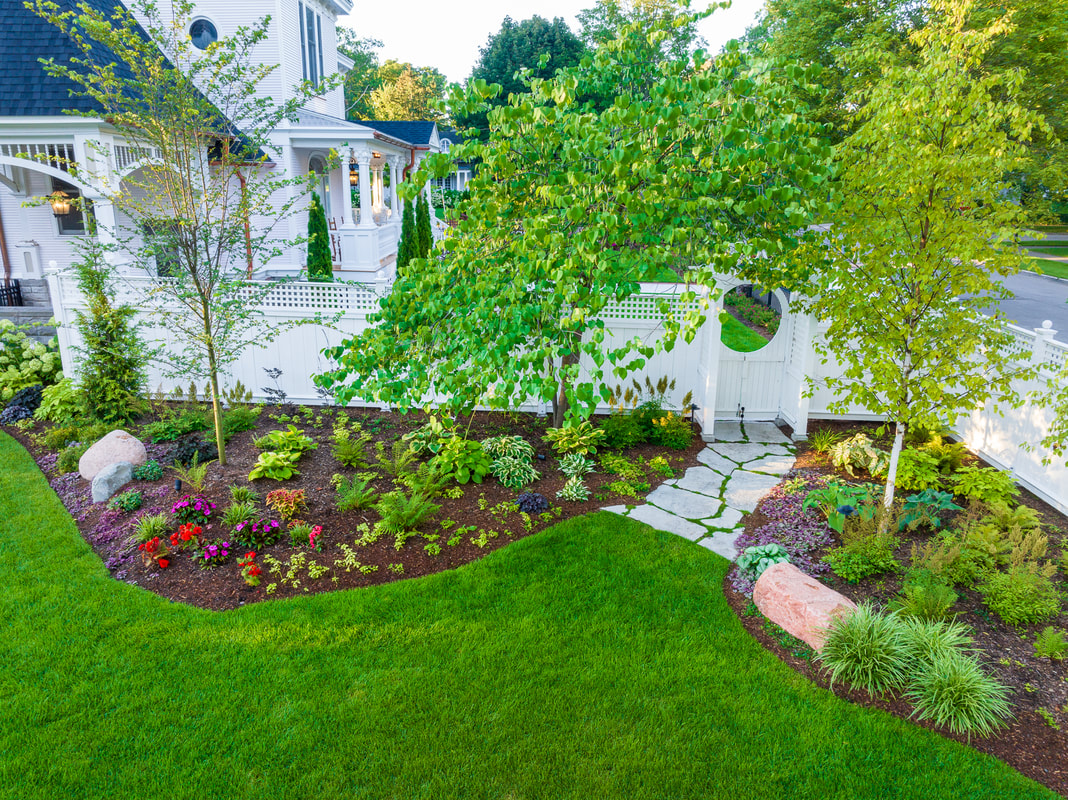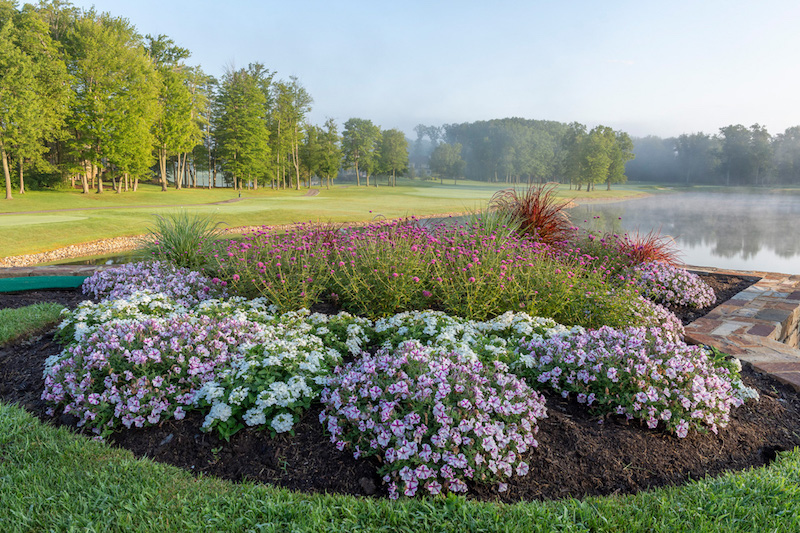Hilton Head Landscapes Fundamentals Explained
Table of ContentsSome Ideas on Hilton Head Landscapes You Need To KnowTop Guidelines Of Hilton Head LandscapesHow Hilton Head Landscapes can Save You Time, Stress, and Money.Rumored Buzz on Hilton Head LandscapesSee This Report on Hilton Head Landscapes8 Easy Facts About Hilton Head Landscapes ShownAll about Hilton Head LandscapesHilton Head Landscapes Things To Know Before You Buy
Kind compatibility is additionally a significant part of unity in designone or more strikingly different types benefit contrast and emphasis, yet typically all various other kinds must have some similarities for a linked appearance. Texture describes exactly how coarse or great the surface of the plant or hardscape material feels and/or looks.
Examples of plants with coarse texture consist of philodendrons, agaves, bromeliads, hollies, hands, and hydrangeas. Hardscape with crude structure includes rough-cut stone, rough-finished brick, and incomplete wood with knots and an elevated grain. Aged or old construction material that keeps a weather-beaten surface is typically rugged in texture. Qualities that create great appearance consist of little foliage; slim, strappy fallen leaves (yards) or tall, slim stems; little, dense branches and small branches; long stems (creeping plants); and little, fragile blossoms.
An Unbiased View of Hilton Head Landscapes
Many plants are moderate texture, in that they can not be explained as having either coarse or fine appearance. Medium-textured plants act as a history to link and merge the crude- and fine-textured plants.

To make an area feel smaller, put the coarse appearances along the outer boundary and the fine textures closest to the visitor. The detail of the rugged texture makes the plants appear closer and makes the room really feel smaller. The viewed texture of plants can additionally change with the distance from the plant.
The Definitive Guide for Hilton Head Landscapes
Vibrant colors raise the comparison and make the structure show up coarser, while low-key colors can squash texture. Hardscape with a coarse texturesuch as extremely harsh rocks and vibrant, large timberstends to make all plant material show up more average distinctive. Designers usually create a texture research study (Figure 8) theoretically to help choose the setup of plant products.
Shade in plant product and hardscape adds passion and variety to the landscape. Color is the most noticeable component in the landscape and is usually the emphasis of the majority of home owners; however, it is additionally the most momentary aspect, typically lasting only a few weeks a year for private plants.
Hilton Head Landscapes Can Be Fun For Anyone
An easy summary of the shade wheel includes the 3 primary shades of red, blue, and yellow; the three secondary shades (a mix of two primaries) of green, orange, and violet; and six tertiary shades (a mix of one nearby primary and secondary shade), such as red-orange. Shade theory discusses the partnership of colors per various other and exactly how they ought to be used in a make-up.

Analogous (occasionally called harmonious) color plans are any type of 3 to 5 colors that are adjacent on the shade wheel, such as red, red-orange, orange, yellow-orange, and yellow, or blue, blue-violet, and violet (landscapers in bluffton sc). The colors are relevant to each other because they usually consist of 2 main shades mixed to develop a secondary and 2 tertiary shades, which suggests they share typical buildings
They have a tendency to have high comparison in between them. The most usual collections are violet and yellow, red and eco-friendly, and blue and orange. Corresponding colors are usually found normally in blossoms; a common set is yellow and violet. Color is discovered in the flowers, vegetation, bark, and fruit of plants.
Hilton Head Landscapes - The Facts
Eco-friendly vegetation in all its various tones is the leading shade by quantity, however other shades capture focus quicker since of their high contrast to the shade green. Color is likewise located in buildings, rocks, pavers, wood, and furnishings. Many colors in natural products, such as rock and wood, are usually muted and often tend to be variants of brownish, tan, and pale yellow.
Shade is an important element for creating rate of interest and range in the landscape. Colors have residential or commercial properties that can impact emotions, spatial perception, light top quality, balance, and focus. One residential or commercial property of color is explained loved one to temperaturecolors appear to be amazing or warm and can impact feelings or sensations. Trendy shades have a tendency to be relaxing and ought to be made use of in locations for relaxation and serenity.
The 7-Second Trick For Hilton Head Landscapes
Awesome shades have a tendency to recede and are viewed as being further away, making a space feel bigger. Color can additionally be utilized to capture attention and straight sights.
For instance, intense yellow, which has the highest intensity, additionally has a high contrast with all various other shades (often referred to as a "pop" of shade) and should be utilized sparingly. A little amount of intense color has as much aesthetic weight as a big amount of look at here a much more suppressed or weaker color.
Similar (sometimes called unified) color systems are any type of 3 to 5 colors that are adjacent on the color wheel, such as red, red-orange, orange, yellow-orange, and yellow, or blue, blue-violet, and violet. The colors are associated to each various other because they generally consist of two key shades blended to create a secondary and two tertiary shades, which suggests they share common residential properties.
All About Hilton Head Landscapes
They often tend to have high comparison in between them. The most common collections are violet and yellow, red and environment-friendly, and blue and orange. Corresponding colors are commonly located normally in blossoms; a common pair is yellow and violet. Shade is located in the flowers, foliage, bark, and fruit of plants.
Eco-friendly foliage in all its numerous tones is the dominant shade by quantity, but various other shades capture focus quicker due to their high contrast to the color green - landscapers hilton head island - https://filesharingtalk.com/members/598268-h1tnhdlndscps. Color is likewise found in structures, rocks, pavers, timber, and furnishings. Many shades in natural materials, such as rock and wood, are typically soft and tend to be variants of brown, tan, and light yellow
Hilton Head Landscapes Fundamentals Explained
Colors have properties that can affect emotions, spatial perception, light quality, balance, and emphasis. Awesome colors often tend to be calming and should be used in areas for relaxation and calmness.
Awesome shades have a tendency to decline and are viewed as being further away, making an area feel larger. Shade can additionally be made use of to catch focus and straight sights - https://www.kickstarter.com/profile/h1tnhdlndscps/about.
Brilliant yellow, which has the highest intensity, additionally has a high comparison with all other shades (often explained as a "pop" of shade) and ought to be used moderately. A small quantity of intense shade has as much visual weight as a large quantity of a more controlled or weak color.